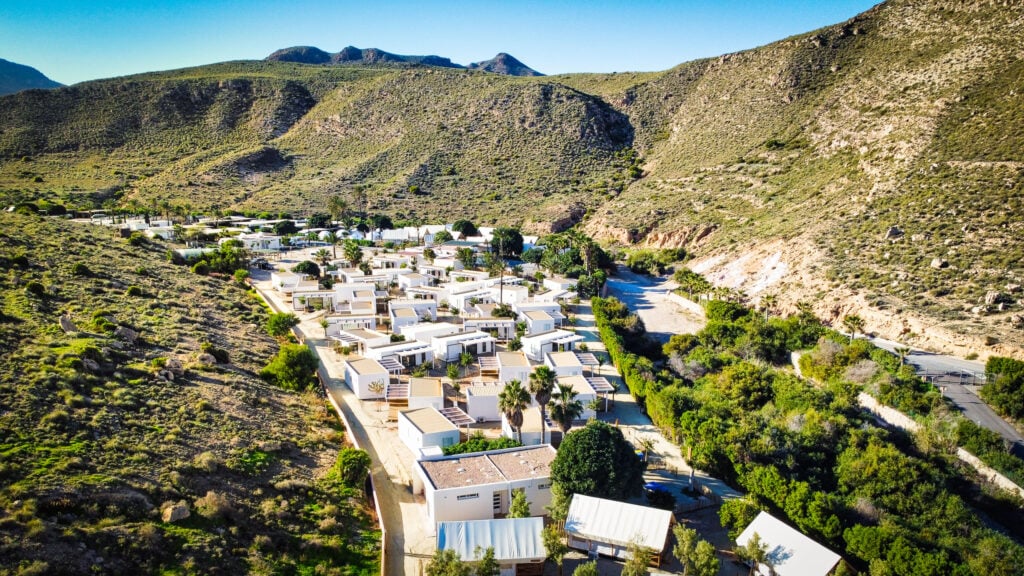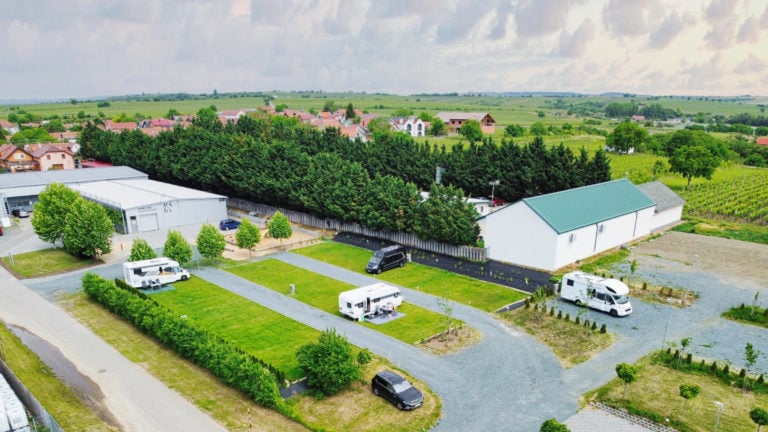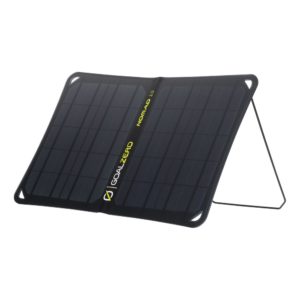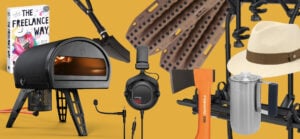
Caravanning In Europe: What You Need to Know
I was looking up all the complex rules of caravanning in Europe – weight allowances, driver’s license, and all the legal regulations. It’s a little bit more complicated than I thought. The good thing is that it’s all covered under a single set of EU laws. This is what I found.
Before I even began to look around for our first travel trailer, I studied a lot of the technical details involved in caravanning in Europe to make sure we’d be in-line with the law. It’s not going to be an easy read, so feel free to make yourself a coffee and maybe grab a donut or two. It took me many hours to create this beginners intro list.
The European Union Laws
Well, honestly, the law is almost the same in all European countries. But some details have gotten lost in translation in some countries, so be ready for some surprises.
1. Campers & RVs
In the States, these are called RVs. In Europe, we call them campers. They’re basically motorized caravans. And they are split into three basic groups.

Vans — The smallest, but most popular, are vans equipped as RVs. The interior is usually converted by the owner DIY, but companies doing this professionally are now emerging. Look for #vanlife on YouTube or Instagram and you’ll get the idea. The most common vans are the Volkswagen Transporter and Westfalia is the best-known company. The California van influenced generations of travelers. The great thing about vans is that you only need a regular driver’s license to drive one, because most vans are under 3.5 tons, which is the limit for car licenses in Europe.

Semi Integrated Campers — This type of RV is the most common solution to camping and caravanning in Europe. The cabin is made by the carmaker (usually Fiat, Citroen and Mercedes, sometimes Ford) and the living space is simply a travel trailer bolted onto the rear of the vehicle. Many people bought these in recent years. Even though they’re larger than a van, they usually consume more fuel and they’re quite basic, they are often under the 3.5 ton limit. The good thing is that the driving area is separate from the living area.

Integrated Campers (the closest to American RVs) — The most luxury option here is a fully integrated camper. In my opinion, the big downside is that this is usually the most expensive, most heavy and least safe option. They’re made of nice-looking plywood and aluminum sheets, which would not save the people on board in case of a dangerous accident. But you get lots of space and comfort, so if you don’t care much about money and you drive safely and not too often, these might work for you. However, many people who travel full-time tend to scale down from integrated campers.
Obviously, the size of European campers fits European standards. Compared to RVs available in the United States, they still make for a rather small home on wheels. European roads are narrower and our cities are older, so this comes from our heritage.

Wecamp Cabo de Gata
Spain • Near artsy Rodalquilar town. In the heart of natural park.
2. Caravans & Trailers
Caravans don’t have an engine, you can tow them with a car or pickup truck. These are the original homes on wheels and they start from just under 750 kilograms. At that weight, they’re just a simple trailer hooked to a car, so you don’t have to upgrade your driving license. A small trailer doesn’t have many luxuries such as a shower, toilet and fridge. Some people say that it’s just a tent you can’t fold down. The benefit is that it’s lightweight. There is a special law that allows you to drive a 3.5 tons car with a trailer in tow using a regular driving license, as long as the rig weighs no more than 4.25tons.
The next weight category is a caravan (travel trailer) with brakes. They’re usually between 1 and 1.5 tons in weight. You can drive them using a standard class B driving license if the combined weight of your car and trailer doesn’t exceed 3.5 tons. Also, the gross weight of your trailer cannot exceed the weight of your car, so the trailer needs to be lighter than the car.
Example Weights of a BMW 5-series Touring Wagon
| Vehicle | Weight | Weight of stuff | Max. total weight |
| BMW 5 | 1,775 Kg | 525 Kg | 2,300 Kg |
| Caravan | 900 Kg | 300 Kg | 1,200 Kg |
| Total | 3,500 Kg |
Unfortunately, not all policemen are up-to-date with the laws, and the laws themselves might change over time. So when you have the time and energy, it’s best to upgrade to a B+E (BE) driver’s license for your own peace of mind. This license allows you to drive heavy trailers until the upper limit of your car. In some European countries you might be required to have a BE license for any trailer over 750Kg.
In case your total gross weight is over 3,500 Kg, you must have a BE driver’s license. And if your towing vehicle weighs over 3.5 tons, you might even need a CE license. What you definitely get is the promise that your transmission will wave you goodbye a bit sooner than if you had a lighter trailer. And if you’re lucky and have a decent recent car, the car can switch to towing mode every time you connect a trailer to it.

Country House Tisá
Czechia • Near Děčín, Ústí nad Labem region
Back to Driving School
Even though I would have been fine with the setup I described above, I ended up going back to driving school, just so I’m ready for the future. I’ll be prepared in case I buy a heavy trailer or a weighty car. The thing that made me most happy about going back to driving school was my instructor — the guy was an avid caravan traveller and he told me a bunch of great stories. Since then, I know what a “mover” is, and that I don’t have to worry about sleeping at a gas station overnight.
Even More Tech Surprises
To make things even more complicated, your car and towing hitch have a weight limit. In most cases, it’s 2,000 Kg. So if you would like to tow a European trailer, things would mostly go smooth. But towing an American Airstream, which starts at around 3,000 Kg, would not work for the vast majority of European cars. If you really like the silver bullet shape, you should buy a lighter European version of the Airstream, which is still pretty heavy, but lighter and a little narrower than the US versions.
7-pin or 13-pin Trailer Plug
There are two types of electrical plugs in Europe. The old one with seven pins is pretty common, but it doesn’t allow you to power a fridge while moving. And then there’s the newer 13-pin plug that you need to order specifically if you want to install it on your car. Some older trailers might still have twin 7-pin plugs that need to be upgraded. The future is the 13-pin plug for sure.

If you don’t have a towing hitch on your car, it’s good to make a price comparison in advance. In my case, an original BMW hitch was around €2,000 ($2,300) while a non-branded one cost €350 ($390), which is a pretty big difference.
So I decided not to give my hard-earned money to BMW, but to feed my local mechanic. One thing you should also take into account is that cars with a hitch can get sold for less, if selling your car to a dealer, because they have likely been used more than cars without a towing history.

Camping Chvalsiny
Czechia • Near Cesky Krumlov and Lipno Dam
Towing in Czech Republic
As far as I know, these are the specific rules applied to towing a caravan trailer in the middle of Europe, meaning Czech Republic and Slovakia (formerly Czechoslovakia).
- On highways, you only need a stamp for your towing car in the Czech Republic, while in Slovakia you need two separate stickers for your car and caravan
- If you drive an RV (Camper or Motorhome) over the gross weight of 3.5 tons, you need to install an electronic on-board unit to automatically pay for tolls, just like trucks and trailers
- In most European countries, a car with trailer in tow is a Category 2 or Category 3, meaning you pay 50-100% more in tolls, but you can’t drive as fast, either because of the speed limit of your trailer (80 Km/h for most trailers, some new ones can go at 100 Km/h or 130 Km/h) or the spike in fuel consumption due to the total weight of your rig

Where to Buy a Caravan in Czech Republic
To be honest, my favorite trailer is the Airstream, because the history of the brand is so strong. On the other hand, British caravans are the best on the market in terms of quality of production. As for value for money, the British caravans are well-equipped while being fairly cheap and reliable.
The offer of trailers on the market in many European countries is great. It’s a vehicle that people don’t use every day, so you can easily buy 30-year-old trailers in good shape with most of the features of the new ones have.
To pick a good dealer, I recommend visiting a few shops first. Look around and compare at least three shops, so you gain a bit of perspective. It’s also better not to rush things. If you wait, you might get a better deal and a nicer interior set-up.
In my opinion, the best dealer in the heart of Europe is Burimex, as there you can get new and used trailers, new motorhomes and also various equipment and services. They provide a cleanup service and they can modify your existing caravan or camper professionally.
If you’re travelling or living in the UK, there are also lots of used, fully-equipped British trailers, on eBay.co.uk. But you might need to deal with rather complex paperwork if you’d like to bring the trailer back to your home country.













